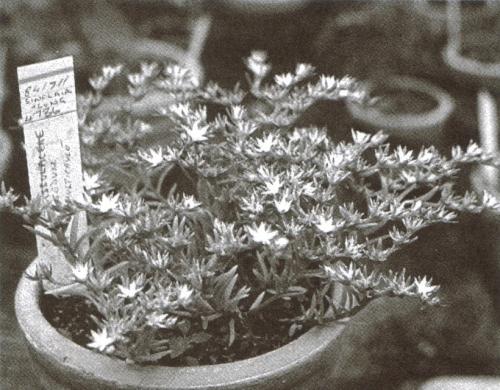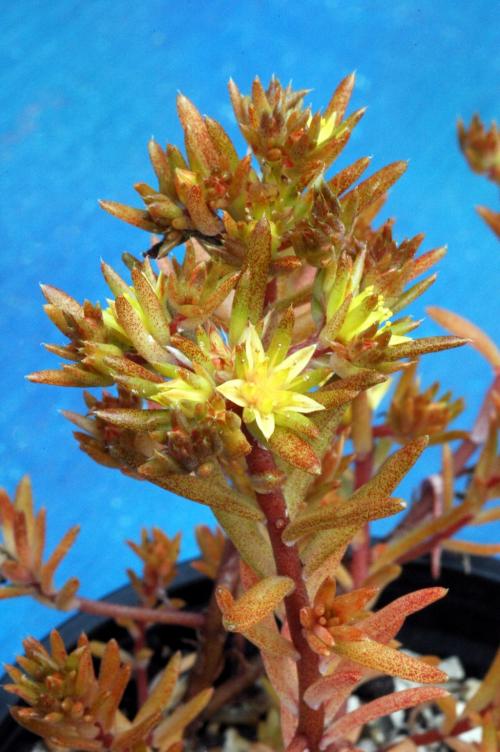MULTICAULE Wallich ex Lindley, 1840
Distribution : Western Himalaya: Pakistan, India, Bhutan and Sikkim to Myanmar, Tibet and China; 1300 - 3500 m.
Description (according to IHSP, 2003) :
Perennial herbs with short sterile stems.
Leaves alternate, imbricate, broadly linear to (narrowly) oblong or ovate (rarely), acuminate, 10 - 15 x 1 - 2 mm.
Inflorescences : Flowering branches ascending, numerous, much-branched, 7 - 15 cm, inflorescences bracteate cymes with 2 cincinni.
FIowers 5- to 7-merous, sepals broadly sessile, unequal, acuminate, 5 - 6,5 mm, petals semi-oblong, long mucronate, yellowish, 4,5 - 6 mm, usually shorter than the sepals.
2 subspecies :
S. multicaule ssp. rugosum K.T.Fu, 1986
Ray Stephenson (Sedum, Cultivated Stonecrops, 1994, p 184) :
From a somewhat thickened rootstock, 15-cm (6-in) long stems rise, and dead stems persist for several seasons. Annual stems of Sedum multicaule are densely leafy for the first season with subterete, linear leaves that have broad bases. Kyphocarpic, 6-partite, campanulate, pink flowers with distinctly upright petals fused in the lower half are produced in early summer.
Habitat : This is a fairly widespread species from northern Iran and central Asia, especially the Kopet Dagh Range from 1500 to 2500 m (4900 to 8200 ft) on mountain steppe, and as far as upper Burma.
Main points of distinction : Small caudex and upward-pointing, campanulate flowers with kyphocarpic fruit are an unusual combination of features for genus Sedum.
Variation : With such a large range, variation can be expected. I have only observed a single spécimen.
Horticulture : This species needs the protection of a cool alpine house.

Sedum multicaule in a 5-in (13-cm) terra-cotta pot. This plant was collected by the Royal Botanic Garden Edinburgh, Himalayan Expedition.

Photo Ray Stephenson